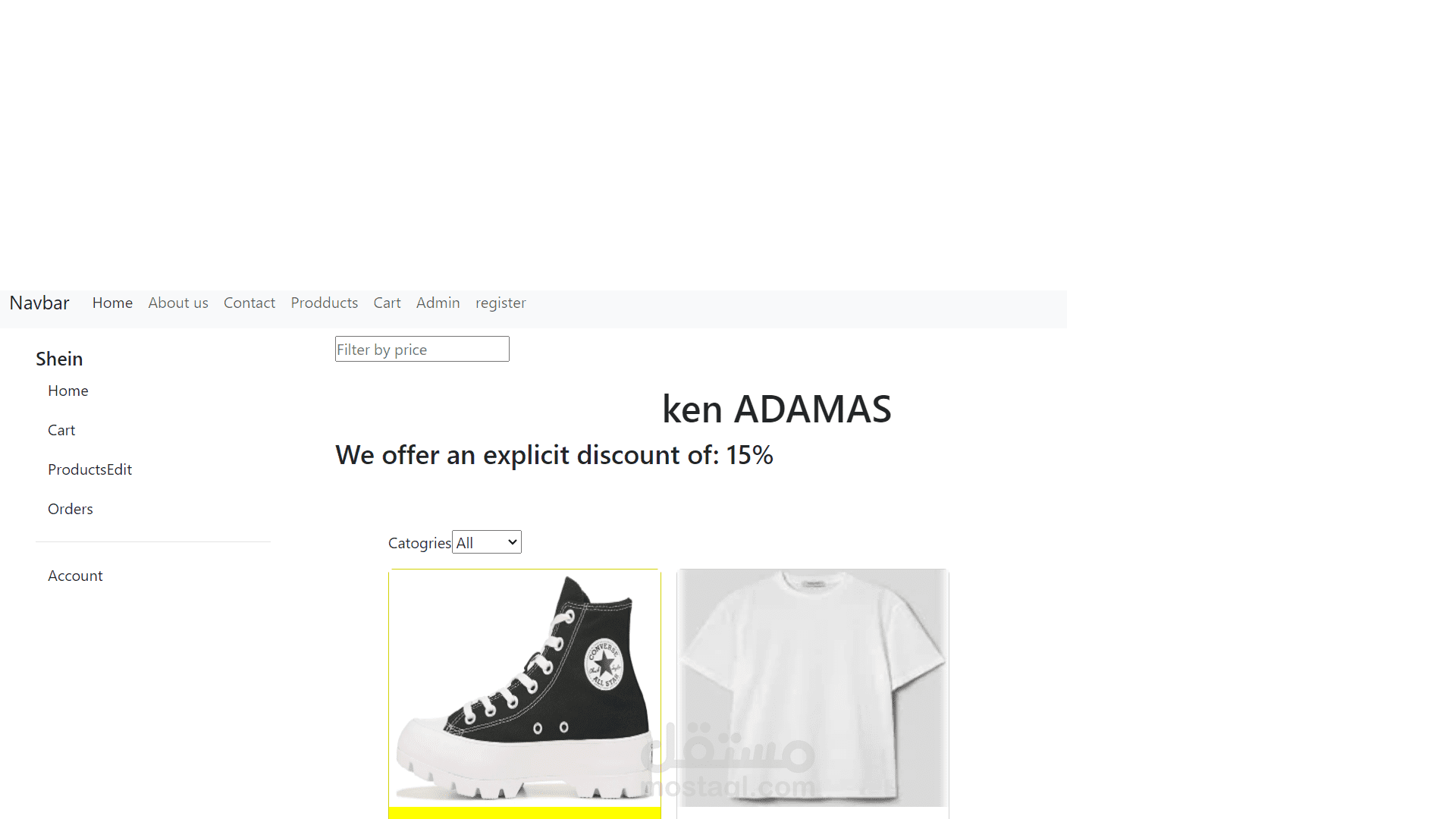ecommerce web with angular and api
تفاصيل العمل
Sure! Let's describe a basic e-commerce web application using Angular for the frontend and a RESTful API for handling CRUD operations for the admin panel. For simplicity, I'll provide a high-level overview of the components and operations involved.
1. Frontend (Angular):
The Angular frontend will be responsible for creating a user-friendly interface for the admin panel. It will allow the admin to manage products, categories, and orders. Here are some key components:
- Login: Admins will need to log in using their credentials to access the admin panel.
- Dashboard: Upon successful login, the admin will be directed to a dashboard showing essential statistics and quick links to different sections.
- Product Management:
- List Products: The admin can view a list of all products in the store with options to edit and delete.
- Add Product: The admin can add new products, including details like name, description, price, image, and category.
- Category Management:
- List Categories: The admin can view a list of all product categories with options to edit and delete.
- Add Category: The admin can add new product categories with a name and optional description.
2. Backend (API):
The backend will consist of a RESTful API built using a backend language such as Node.js with Express or any other backend framework of your choice. The API will handle CRUD operations for products, categories, and orders and interact with a database to store and retrieve data. Key API endpoints might include:
- Authentication: Endpoints to handle admin login and logout.
- Product API Endpoints:
- GET `/api/products`: Fetch all products.
- GET `/api/products/:id`: Fetch a specific product by ID.
- POST `/api/products`: Create a new product.
- PUT `/api/products/:id`: Update a specific product by ID.
- DELETE `/api/products/:id`: Delete a specific product by ID.
- Category API Endpoints:
- GET `/api/categories`: Fetch all categories.
- GET `/api/categories/:id`: Fetch a specific category by ID.
- POST `/api/categories`: Create a new category.
- PUT `/api/categories/:id`: Update a specific category by ID.
- DELETE `/api/categories/:id`: Delete a specific category by ID.
Remember, this is a high-level overview, and in a real-world scenario, you'd need to consider additional aspects such as pagination, input validation, error handling, and deployment. Additionally, always prioritize security measures, especially when dealing with user credentials and sensitive data.
